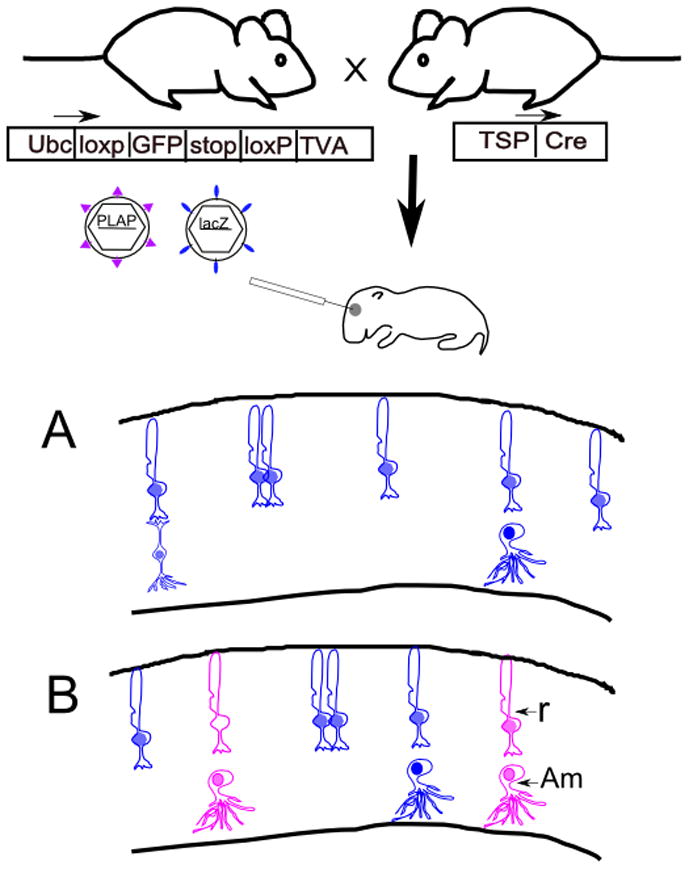Figure 1.

Experimental strategy for use of the cTVA allele for lineage analysis. A mouse with conditional expression of TVA can be crossed to a Cre line of choice, with expression of Cre directed by a tissue-specific promoter (TSP). TVA, a receptor for viruses with the EnvA glycoprotein, will be expressed in cells with a history of Cre expression. Viruses pseudotyped with the EnvA glycoprotein are able to infect TVA-expressing cells, and are not able to infect non-TVA expressing mouse cells. Viruses pseudotyped with the VSV-G glycoprotein can infect any mitotic cell. Two viruses, one pseudotyped with EnvA, encoding PLAP, and one pseudotyped with VSV-G, encoding lacZ, can be coinjected into a developing tissue, e.g. the eye. The drawings in A and B depict retinal sections following histochemical processing for PLAP (purple) and β-galactosidase (blue). (A). If a control, TVA-negative retina is injected with a mixture of the two viruses, only blue clones will result. (B) If a TVA expressing retina is injected with this mixture of viruses, both types of viruses will infect mitotic cells, giving rise to blue and purple clones. In this example, the cells with a Cre history generate clones of rod photoreceptors (R) and amacrine interneurons (Am).
